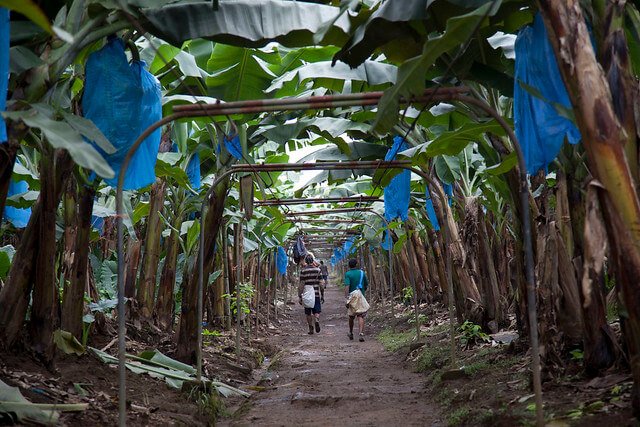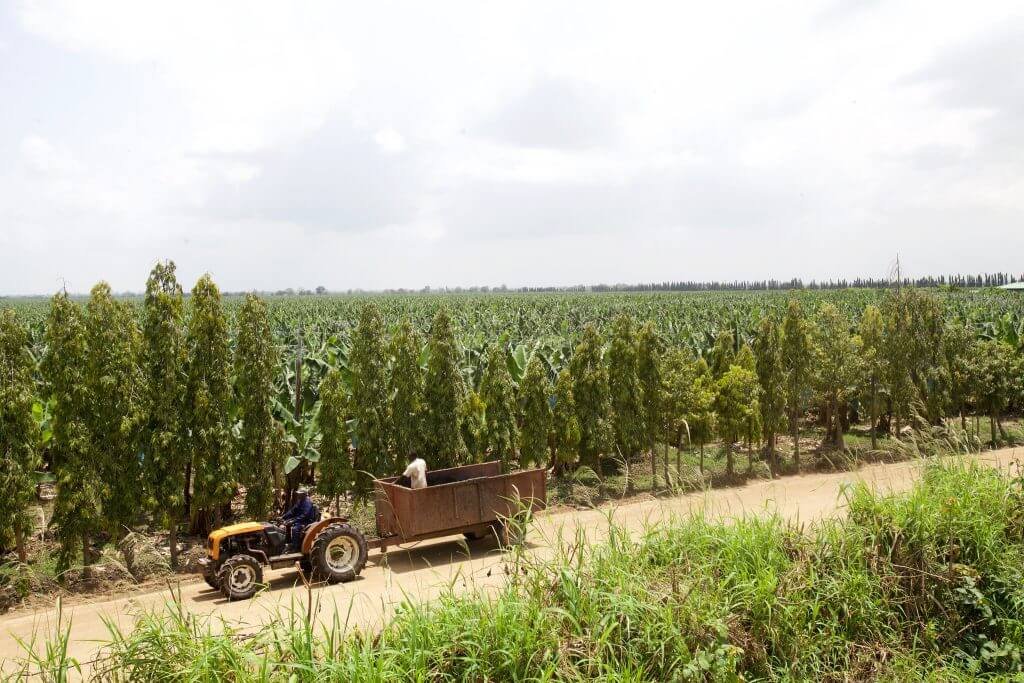Premium Quality Conventional Cavendish Bananas
The First Fruit on Earth?
Some horticulturists believe that bananas were the first fruit on earth. Their origin is placed in Southeast Asia, in the jungles of Malaysis. Indonesia or the Philippines. where many varieties of wild bananas still grow today. Africans are credited to have given the present name, since the word banana would be derived from the Arab for ‘finger’. Bananas started to be traded internationally by the end of the fourteenth century. The development of railroads and technological advances in refrigerated maritime transport subsequently enable bananas to become the most traded fruit in the world.


Global Production
Bananas are grown in more than 150 countries, and 105 million tonnes of fruit are produced each year. Bananas which are grown for local consumption are generally grown in traditional, extensive systems. The Dessert banana, like the Cavendish variety, are of huge economic importance to many countries in the Global South, and they account for 43 million tonnes. and the Plantain account for 45 million tonnes. Locally consumed bananas are a staple food in many tropical countries and play a major role in terms of food security.
How Bananas Are Grown
People often assume that the banana fruit grows on trees, however, the banana is a high herb which can grow up to 15 metres. There are over 1000 different varieties of bananas growing around the world, subdivided into 50 groups. Some are sweet, like the Cavendish variety, which is the most common and most widely exported. It is named after Musa Cavendishii and was first grown at Chatsworth House in the UK in 1830. This variety of banana is currently under threat from a disease called Sigatoka, which has reduced banana yields by 40% every year.

HLC Specialized Goods Trading's Premium Quality Conventional Cavendish Bananas are sourced from Philippines to the whole world
Premium Quality Conventional Cavendish Bananas
Cavendish bananas are of a large size, with a distinctive fresh taste and a creamy texture. We offer Conventional as well as Organic, Fairtrade and Organic Fairtrade options within our premium quality range
Organic & Fairtrade Cavendish Bananas
Many shoppers seek out Organic, Fairtrade or Organic Fairtrade certified produce, which is farmed using sustainable techniques, thus protecting the environment for future generations and supporting local livelihoods.
Baby Bananas
Our very own BanaBinos, HLC Specialized Goods Trading premium quality baby bananas extend the offering to specifically appeal to the children’s market, encouraging healthy snacking. BanaBino baby bananas have bright yellow skin and dense creamy flesh with a slightly sweeter taste. The compact portion size has novelty value and fits neatly into school lunch boxes.
Plantains
These ‘cooking’ bananas are grown in Philippines where the best plantains come from. HLC Specialized Goods Trading plantains are a traditional green variety. A popular ingredient in South American cuisine, the fruit is increasingly in demand for savoury dishes in other parts of the world.
How Bananas Are Grown
Banana plants are often mistaken for trees or palms they are actually herbs. The banana is a perennial plant that replaces itself. Bananas do not grow from a seed but from a bulb or rhizome, and it takes 9 to 12 months from sowing a banana bulb to harvesting the fruit. The banana flower appears in the sixth or seventh month. Unlike other fruit like apples which have a growing season, bananas are available all year round. Banana plants thrive in tropical regions where the average temperature is 80° F (27° C) and the yearly rainfall is between 78 and 98 inches. Most bananas exported are grown within 30 degrees either side of the equator. The plants need rich, dark and fertile soils with steady moisture in the air and ground and good drainage
Harvesting & Ripening
After nine months, the bananas are harvested while still green. At the packhouse they are inspected and sorted for export. Buyers of fruit in the UK want unbruised bananas and so very high standards are set. If the bananas do not meet these standards they are usually sold locally at a much lower price. The fruit is then transported to ports to be packed in refrigerated ships called reefers (bananas take between six and twelve days to get to the UK/Europe). In order to increase shelf life, they are transported at a temperature of 13.3°C, and require careful handling in order to prevent damage. Humidity, ventilation and temperature conditions are also carefully monitored in order to maintain quality. When the bananas arrive at their destination port they are first sent to ripening rooms (a process involving ethylene gas) and then sent to the shops.
Nutritional benefits
Bananas are a good source of potassium, an essential mineral for maintaining normal blood pressure and heart function.
Bananas are a good source of potassium, an essential mineral for maintaining normal blood pressure and heart function. Even though bananas are a fruit that tastes quite sweet when ripe – containing 14-15 grams of total sugar – bananas receive a rating of low in their glycemic index (GI) value. GI measures the impact of a food on our blood sugar. This low GI value
for bananas is most likely related to two of their carbohydrate-related qualities. The unique mix of vitamins, minerals, and low glycemic carbohydrates in bananas has made them a favorite fruit among endurance athletes. Their easy portability, low expense, and great taste also help support their popularity in this exclusive group.
Our products
HLC Specialized Goods Trading offer a variety of healthy, wholesome and nutritious products…
Essential to a healthy lifestyle. We rush top-quality fruits to you assuring you are receiving the freshest, most flavourful and delicious fruits available.
